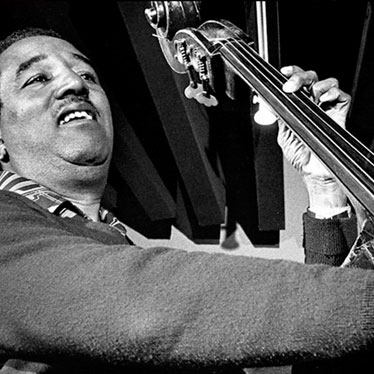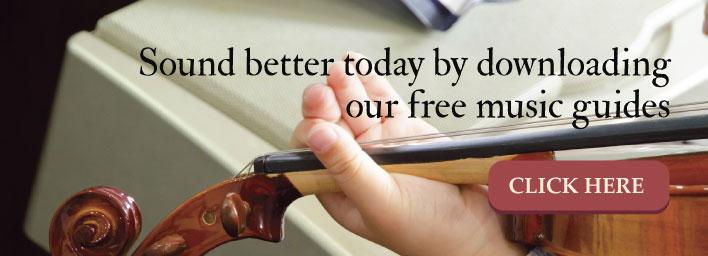4 Habits Of Celebrity String Bassists

Bassists are cool. The upright bass is the first instrument anyone thinks of when someone mentions jazz. We can picture them, twisting those monster instruments around as they play. Bassists are just cool.
Yet like any musician and performer, the great bassists aren’t simply born. They have to practice just like everyone else on stage. We curated some quotes from four celebrity bassists to share their thoughts on how they practice and master their craft.
Ron Carter
Ron Carter is officially the most-recorded jazz bassist in history. He’s performed on over 2000 recordings! Born in Michigan in 1937, he started out on the cello, but moved to the double bass. While attending the Eastman School of Music in New York he played the double bass in its philharmonic orchestra. He talks about how his current practice routine differs from his younger days:
“…when I was younger, I had lots of time, and I was looking to translate what I heard in my head to the bass. These days, my practice time is a little bit different. Right now, I'm busy all the time, and when I travel I don't take my bass…I first see the bass I'm going to use when I get to the concert hall…so I can't just practice whenever I want to when I'm traveling.
“Having said that, when I'm in New York… I practice just two hours a day, and I practice just scales and etudes, including the Billie method and study books, the Storch-Hrabe etudes, and the occasional Bach cello suite transcribed for string bass. They help me with my skill level and my ongoing search to ‘find the right notes.’ "
Of course, as an accomplished, legendary bassist, he doesn’t just practice now - he teaches as well:
“What I emphasize with my students is coordination, getting your left and right hand together to do what you want them to do. Coordination is all about getting your hands to find the right locations for the notes you want to play. The right notes at the right time and in tune. A lot of guys think strength is important, but I find that coordination is more the key to bass playing than the strength and power of the hand.”
Dave Holland
Born in the United Kingdom in 1946, this double bass legend has lived in the United States for over 40 years. He began as a self-taught musician, starting with the ukulele when he was four-years-old. He then moved on to the bass guitar, and eventually made it to the upright bass by the early 1960s. His original main source of practice was to play along with jazz records and play lots of live gigs. He finally connected with a classical teacher, James Merritt, who was the principle of the London Philharmonic. Holland shares how this mentor guided him towards formal instruction which helped him to find his path:
“[Merritt] suggested that maybe I’d like to apply for a full-time three-year performance course at the Guildhall school. I did audition for the school and for a scholarship from the government.
In ’66, I went for a summer program, an orchestra thing, playing an all-Bartok workshop. I was principle of the orchestra at school by that time…I’m telling you this because the end of that summer was a kind of a turning point for me. I came back in a bit of a creative crisis. I was like, ‘What can I do that would ever match that? I’ve got to decide what I’m going to do.’
“I saw this as being a sort of crossroads, where I had to decide what I was going to make my commitment. When I came back to London, I talked to my friends and, after some thought, I said to myself, ‘Well, the music that I play that’s most personal is the jazz music. What I can do may never reach the heights of what I’d just done with this orchestra, but at least it’s my music and I can put myself into it and I can express myself to the fullest extent that I’m able in that context.’“
Ray Brown
This Pittsburgh native also got his start by playing along with the jazz greats of his time – who were the greatest jazz greats. Born in 1926, Brown was first a piano player. He joined his junior high school orchestra, but got impatient waiting for his time each day to practice on the piano:
“[The orchestra] had about, I don’t know, 28 piano players and they had 3 basses and only 2 bass players. So every day, there was a bass laying on the floor, doing nothing. And I’m sitting over there waiting for my 15 minutes a week to sit down to the piano. It’s difficult for teenagers to sit around all day and not do anything and stay out of trouble. So I asked the teacher, ‘Hey, if I was playing that bass, I could play every day.’ He said, ‘That’s right. We’re looking for another bass player.’ I said, ‘Okay, you’ve got one.’ And that was it.
“I just played it. Just figured it out. The schoolteacher… gave you five minutes maybe, and then you were on your own. But I was bringing these things home; I was practicing with the records. And I luckily played a lot with Duke Ellington, because the guy [Jimmy Blanton] who was on that record sounded best to me. So I played with that record all the time. Any Duke Ellington record… Daily”
John Clayton
Fortunately, Ray Brown also taught young upright bassists, including John Clayton. Clayton was born in California in 1952. He started studying with Ray Brown when he was only 16-years-old. He appeared on the television show The Mancini Generation when he was just 19-years-old. Today, he continues to perform and acts as the artistic director for jazz festivals all around the United States. He talks about his mentor:
“Ray Brown was the perfect teacher, mentor and father figure for me and for many others. I learned so many life lessons from him… In the extension course he taught at UCLA, he had all of us learn all the major and minor scales in two and three octaves, all chord types, walking bass lines and singing melodies while accompanying ourselves on the bass.”
Clayton also shares how Brown’s influence has stayed with him as Clayton teaches his own students:
“I’m lucky that I love to teach. Well, guide, really. I don’t believe I teach anyone anything; I think we teach ourselves. But the role of coach, inspirer, guide…whatever, is important. Ray Brown and the musicians in his world were people who gave and shared their talent and knowledge. Ray especially never allowed me to understand anything but passing on knowledge and giving to others.”
If you want to learn from Clayton, he has numerous bass tutorials up on his website.
Reading the words of these great bassists, you can see another trait they all have in common besides the awesome musician thing – they’re story tellers. Maybe that’s part of what makes them awesome bassists – that, and the practicing!
Top image of Ray Brown Courtesy of YouTube – "I'm Walking," 1990.


